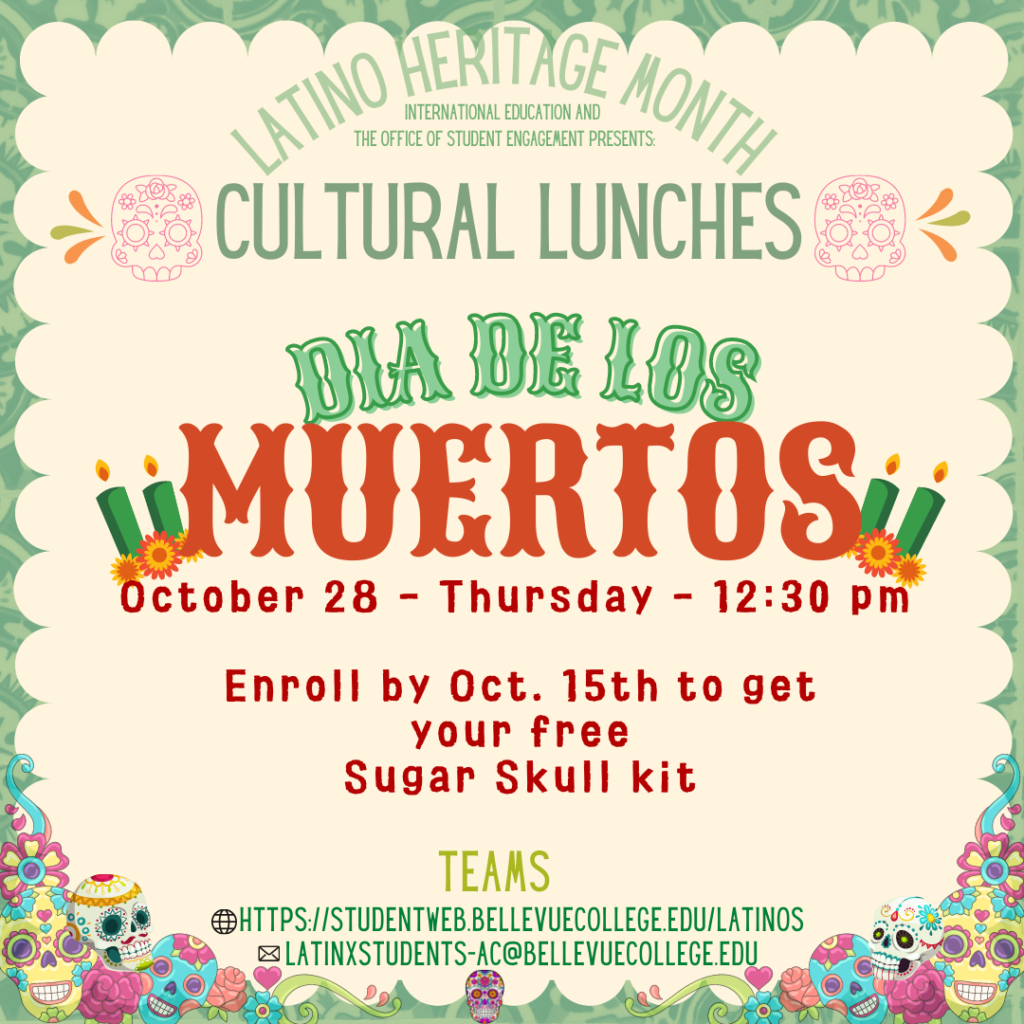Mexico: Sugar Skulls – Cultural Lunches

Dia de los Muertos — The Day of the Dead
The Day of the Dead (el Día de los Muertos), is a Mexican holiday where families welcome back the souls of their deceased relatives for a brief reunion that includes food, drink and celebration. A blend of Mesoamerican ritual, European religion and Spanish culture, the holiday is celebrated each year from October 31- November 2. While October 31 is Halloween, November 1 is “el Dia de los Inocentes,” or the day of the children, and All Saints Day. November 2 is All Souls Day or the Day of the Dead. According to tradition, the gates of heaven are opened at midnight on October 31 and the spirits of children can rejoin their families for 24 hours. The spirits of adults can do the same on November 2.
Origins of Day of the Dead
The roots of the Day of the Dead, celebrated in contemporary Mexico and among those of Mexican heritage in the United States and around the world, go back some 3,000 years, to the rituals honoring the dead in pre-Columbian Mesoamerica. The Aztecs and other Nahua people living in what is now central Mexico held a cyclical view of the universe, and saw death as an integral, ever-present part of life.
Upon dying, a person was believed to travel to Chicunamictlán, the Land of the Dead. Only after getting through nine challenging levels, a journey of several years, could the person’s soul finally reach Mictlán, the final resting place. In Nahua rituals honoring the dead, traditionally held in August, family members provided food, water and tools to aid the deceased in this difficult journey. This inspired the contemporary Day of the Dead practice in which people leave food or other offerings on their loved ones’ graves, or set them out on makeshift altars called ofrendas in their homes.
How is it celebrated?
The observance of Dia de los Muertos is elaborate. Altars are constructed and decorated with candles, flowers, food and drink. Toys are left for deceased children, and cigarettes and mescal, an alcoholic beverage similar to tequila, are left for deceased adults.
To finish the altar, or ofrendas, skulls made of sugar and decorated with frosting are put into place. The sugar skulls are often purchased at open-air markets.https://c463086a2c4690ea2c438c2d0fb16ac7.safeframe.googlesyndication.com/safeframe/1-0-38/html/container.html
The altars and accompanying feasts can be expensive, but celebrants sacrifice and save to put on the annual celebrations to honor their departed loved ones.
The celebrations begin in the home, but by the afternoon of Nov. 2, the festivities move to the cemetery, where family members clean graves, listen to music and talk about the dead.
In some places, there are street parties or citywide festivals.
What are sugar skulls?
Sugar skulls are made from molds and decorated with frosting. They are placed on the altars in the homes of those celebrating Dia de los Muertos. Sometimes the skulls are eaten, but more often they are used as decorations for altars.
Sugar art is believed to have been brought to the New World by Italian missionaries in the 17th century.
Sources: https://www.history.com/topics/halloween/day-of-the-dead / https://www.ajc.com/news/national/what-dia-los-muertos-and-when-celebrated/